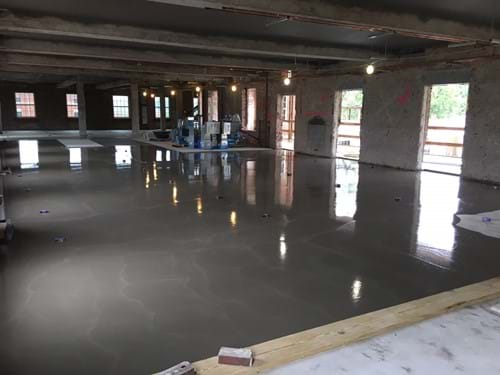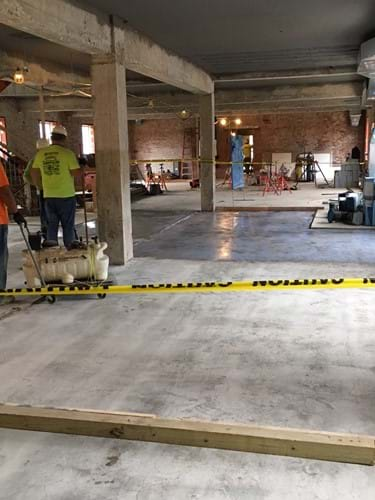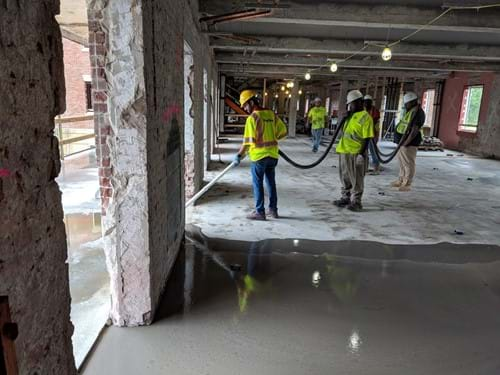TEC® Helps the University of Alabama Preserve Architectural History
The University of Alabama has been transforming Tuscaloosa’s historic Bryce Hospital into a destination for academic and cultural pursuits. University Hall is one of the buildings in the Bryce complex that benefited from the university’s investment in restoring the hospital campus. The renovated University Hall building houses multiple university programs’ offices. Renovation of the Bryce buildings has been a win for both the state and the university, as it preserved architectural history and provides much needed academic space.
The Bryce Women’s Admission Center building was purchased by the university in 2010 and subsequently renamed University Hall. The university approved nearly $26 million to renovate University Hall, which includes restoring the building’s three stories and its domed tower. Once university engineers inspected the 80 year old building, they realized that the interior would need to be stripped back to the outer brick walls to create the large room sizes needed for university programs’ use. It took several years of planning and demolition work to get University Hall ready for its first updates in decades.

To begin the project, Architect James Hewitt AIA, CSI, CDT, of Williams Blackstock Architects needed to make sure the floors were prepared properly to support all the other work that would take place in the gutted structure. Hewitt knew there would be many floor prep challenges, given the size of the building and the varying conditions of the stripped back floors. Generally with buildings as old as University Hall, it is important to take time to finish structural repairs, interior framing, ceiling work and all door and window replacements before starting the flooring preparation. Not surprisingly, the university construction schedule was extremely tight, so many trades were working simultaneously on this project.
To make sure floor preparation went smoothly, the architects called upon a trusted partner, Applied Floors Inc., AFI, to get the job done. Bill Robinson, Business Development Manager for AFI, assessed the job site to determine the floor leveling needs. With many long hallways and now wide-open areas inside, the University Hall floors presented with inconsistencies and dips up to 2” in some spots. In addition, the very old concrete substrate required extra attention.
Whenever concrete is as old as the substrate in University Hall, it is important to perform stability testing and water drop testing to determine the “thirst” level of the concrete. As with all concrete surfaces, old and new, the concrete must be prepped for the materials that will be applied over the substrate. Concrete preparation includes careful cleaning to remove any dirt, loose debris or surface contaminants. After the cleaning and testing is successfully completed, the surface is ready for priming. University Hall was primed with TEC® Multi-Purpose Primer.

TEC Multi-Purpose Primer is designed to prime both porous and non-porous surfaces. When AFI’s Bill Robinson finds the concrete has tested as “thirsty”, he checks to see how quickly the primer dries once applied, so that he can add a second coating if needed.
A drying time under one hour suggests a second coat of primer is needed to ensure that the surface is ready for the next step.
Robinson’s go-to product for leveling is TEC LevelSet™ 200 Self-Leveling Underlayment for its ease-of-use, flowability, pourability and pumpability. “The University Hall flooring was in terrible shape and many trades were waiting to get onto the floor in order to meet the job’s compressed timetable. So, my crew worked quickly and carefully staged pumping the LevelSet 200 to get the job done right. With the size and condition of the areas to level, we knew the placement of the pumping equipment and having a reliable leveling product were exceptionally important,” commented Robinson.

In the areas where the leveling compound would be applied greater than 1/4 inch deep up against a wall, AFI created an expansion gap. This simple step ensured that TEC LevelSet 200 would have room to expand and remain structurally sound. In a few places where the University Hall concrete had dips greater than 2 inches, AFI had to repeat the leveling process just for those areas. The job required many truckloads of TEC products, and the crowded job site necessitated tight coordination of product deliveries. AFI had to work around other construction deliveries and navigate five or so hectic University of Alabama Fall football weekends. Ever vigilant, H.B. Fuller Construction Products’ Technical Sales Manager Gary Whitfield made sure that the TEC products were on-site when AFI needed them. Additional support came from Anup Deb of H.B. Fuller Construction Products’ technical group, who was on-site for the leveling work. Deb witnessed the many tradepeople converging on the floor as soon as LevelSet 200 was ready for traffic. Deb noted that “it’s gratifying to see how formulating LevelSet 200 for walkability in just 3 hours, made a difference for the project.
The University of Alabama had high expectations for University Hall project both during restoration and after its Spring 2019 completion. The finished building preserved its historic exterior beauty but now offers modern interior comforts. AFI and TEC products were fortunate to be on the ground level of repurposing one of Alabama’s architecturally and historically significant buildings.
If you have questions about which product is right for your job, contact our Technical Support team or call 1-800-832-9023, Mon-Fri 8 a.m. - 6 p.m. CST.
